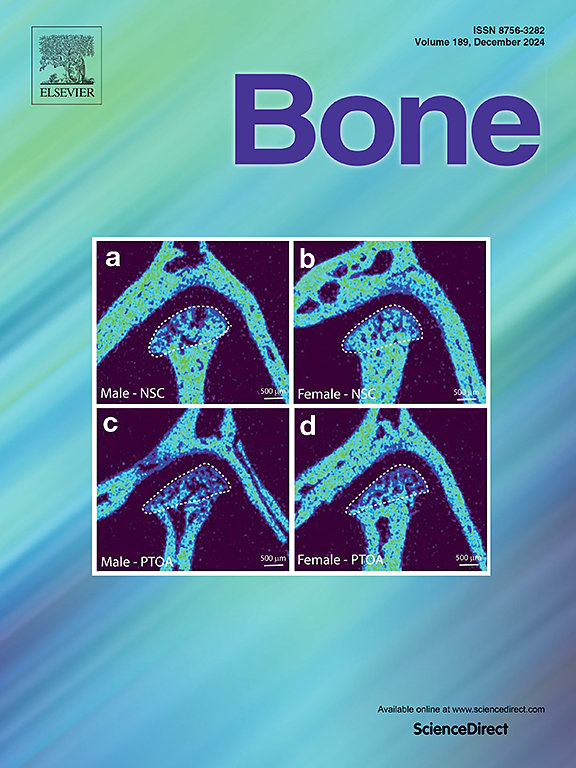Comparative effectiveness of romosozumab versus teriparatide for fracture prevention: A new-user, active comparator design
IF 3.6
2区 医学
Q2 ENDOCRINOLOGY & METABOLISM
引用次数: 0
Abstract
Background
Comparative evidence on the effectiveness of romosozumab and teriparatide in preventing osteoporotic fractures remains limited. This study evaluated their effectiveness in fracture prevention.
Methods
This observational new-user cohort study used the DeSC Healthcare database, a nationwide claims database in Japan. Patients aged ≥40 years with osteoporosis, defined by International Classification of Diseases, 10th Revision codes or prior fragility fractures, who newly initiated romosozumab or teriparatide between March 2019 and August 2021 were included. The primary outcome was the major osteoporotic fractures within 1 year. Secondary outcomes included 2-years fracture incidence and individual fracture types. Cox proportional hazards models, weighted by inverse probability-of-treatment derived from propensity scores, were used to estimate hazard ratios (HRs) with 95 % confidence intervals (CIs), accounting for patient- and facility-level confounders.
Results
Among 35,547 observations (romosozumab: 9603; teriparatide: 25,944), the mean ages were 80.3 and 80.0 years, 85.2 % and 81.3 % were women, and 64.4 % and 71.9 % had a history of fragility fracture, respectively. The 1-year incidences of major osteoporotic fractures were 10.14 per 100 person-years (teriparatide) and 7.01 per 100 person-years (romosozumab) (HR: 0.80, 95 % CI: 0.71, 0.89). Romosozumab was also associated with lower rates of composite fractures over 2 years (HR: 0.81, 95 % CI: 0.72, 0.90); vertebral fractures over 1 and 2 years; and proximal humeral, distal forearm, and proximal femoral fractures over 1 year.
Conclusions
In this nationwide Japanese cohort, romosozumab use was associated with a lower incidence of major osteoporotic fractures compared to teriparatide over both 1- and 2-year follow-up periods among high-risk patients with osteoporosis.
罗莫索单抗与特立帕肽预防骨折的比较效果:一种新用户、主动比较设计
背景:关于罗莫索单抗和特立帕肽预防骨质疏松性骨折有效性的比较证据仍然有限。本研究评估了其预防骨折的有效性。方法:这项观察性新用户队列研究使用了DeSC医疗保健数据库,这是日本的一个全国性索赔数据库。纳入2019年3月至2021年8月期间新使用romosozumab或teriparatide的年龄≥40岁的骨质疏松症患者,由国际疾病分类,第10次修订代码定义或既往脆性骨折。主要观察指标为1年内发生的主要骨质疏松性骨折。次要结局包括2年骨折发生率和个体骨折类型。Cox比例风险模型,由由倾向得分得出的治疗逆概率加权,用于估计95%置信区间(ci)的风险比(hr),考虑到患者和机构水平的混杂因素。结果在35,547例观察中(romosozumab: 9603例;特立帕肽:25,944例),平均年龄为80.3岁和80.0岁,85.2%和81.3%为女性,64.4%和71.9%有脆性骨折史。1年内主要骨质疏松性骨折的发生率为10.14 / 100人年(特立帕肽)和7.01 / 100人年(罗莫索单抗)(HR: 0.80, 95% CI: 0.71, 0.89)。Romosozumab还与2年内较低的复合骨折发生率相关(HR: 0.81, 95% CI: 0.72, 0.90);椎体骨折超过1年和2年;肱骨近端,前臂远端,股骨近端骨折超过1年。结论:在这个全国性的日本队列研究中,在1年和2年的随访期内,高危骨质疏松患者中,与特立帕肽相比,romosozumab的使用与较低的严重骨质疏松性骨折发生率相关。
本文章由计算机程序翻译,如有差异,请以英文原文为准。
求助全文
约1分钟内获得全文
求助全文
来源期刊

Bone
医学-内分泌学与代谢
CiteScore
8.90
自引率
4.90%
发文量
264
审稿时长
30 days
期刊介绍:
BONE is an interdisciplinary forum for the rapid publication of original articles and reviews on basic, translational, and clinical aspects of bone and mineral metabolism. The Journal also encourages submissions related to interactions of bone with other organ systems, including cartilage, endocrine, muscle, fat, neural, vascular, gastrointestinal, hematopoietic, and immune systems. Particular attention is placed on the application of experimental studies to clinical practice.
 求助内容:
求助内容: 应助结果提醒方式:
应助结果提醒方式:


